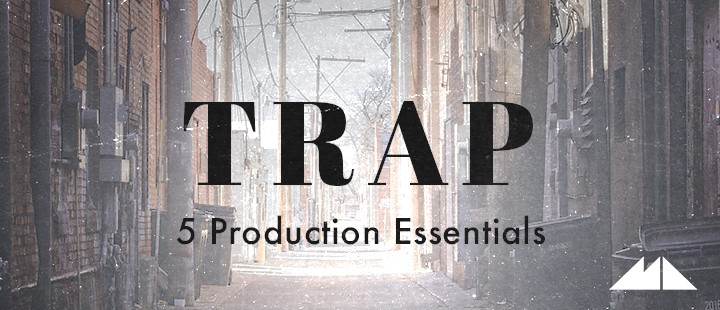
Welcome to the 4th instalment of my music Production Essentials series! Today I'm going to look at the most vital elements of one of the most exciting genres to emerge this side of the Millennium - Trap.
Evolving from the relatively underground style of Dirty South, a raw, grimy style of Hip Hop first cooked up in the swelter of America's Deep South, Trap quickly captured the minds of millions and has since gone on to conquer the charts.
Trap has permeated all corners of the electronic music spectrum and we'll discuss 5 of its most instantly recognisable hallmarks in this tutorial - you'll also have the chance to download free sounds at the end!
1. Tempo Tantrum
First things first - what sort of BPM are we talking here' Older Trap tracks tended to roll along at around either 70 or 140 BPM but those figures have been boosted a little in recent times to hit closer to the 80 - 85 BPM mark.
Trap tunes can either be constructed at their actual, slower tempo of around 70 - 85 BPM, or if you find it easier to work with, you can double the tempo and create your beats in half-time (in these instances you would spread your beat over two bars, as opposed to only a single bar of the halved tempo).

As soon as you dial a tempo up in the range specified above and listen back to your metronome click, you'll notice one thing - Trap is slooooooow! This is a major part of where that epic, head-nodding rhythmic feel comes from and when combined with the rhythmic elements we'll discuss below, you'll really start to whip up some of that low-slung beat magic.
2. The Machine Rising
So, we've got our tempo locked in but what type of sounds do we want to use to construct our Trap drum beat? The key here, as with so many electronic genres, is to turn to that most classic of analogue drum machines, the Roland TR-808!
Trap kicks come from this legendary rhythm computer but with a twist - rather than keeping the decay fairly short, similar to an acoustic kick drum and as featured in countless dance and classic Hip Hop tunes, Trap producers use kicks with decays turned all the way up to beyond the 300ms mark. This creates a lazy, heavy bass sound that constitutes probably the single most recognisable element of the genre.
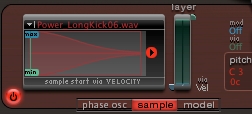
For snares, Trap heavily favours the famous snare sound again created with the TR-808. A nice, snappy click, short sine tone and noise burst does the job perfectly and allows you to tune your snares, more of which we'll talk about below.
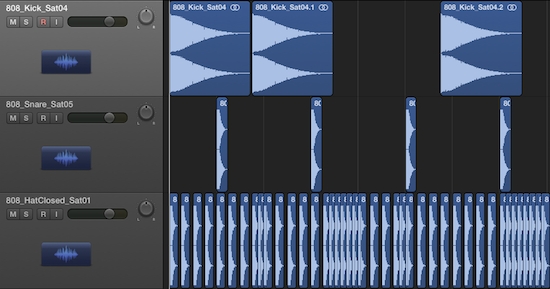
Finally, hi hats and cymbals are also typically taken from the classic drum machines, although using acoustic hi hats can really add spice to your beats. So, to really get going with your Trap beats you're going to need some quality drum sounds, of which you can find a great deal in our catalogue of thumping, royalty-free Trap drum samples (as well as more specifically in our Resonate and Beat drum sample packs).
3. Rhythm & Stealth
Example Massive presets & MIDI files demonstrating the techniques in this section can be downloaded for free at the bottom of the page!
As we've established, Trap is super-slow, which gives us plenty of space within our grooves and drum patterns to work with. This sparse quality, and when you choose to fill things up and then break them back down, is where Trap gets a lot of its power to build and dispel momentum and tension.
With a main snare on the typical 2 and 4 beats, you can get a lot more creative with the syncopation of your kick drum. We're going to cover kicks further below, so let's turn our attention to those skittering hi hats now.

With the snares and kicks being generally sparsely applied, with lots of space in between the hits, the hi hats step in to create some rhythmic interest. The rushing quality achieved with hats by many Trap producers is one of the genre's most defining features, so we need to get it right in our own experiments.

Firstly, let's just lay down a simple, straight 1/16th note hi hat pattern - a hat on every semi-quaver, in other words. Now, choose a few sections to switch up to 1/32nd notes, plus even faster sections of 1/64th notes - notice how this really starts to give the groove some accentuation and momentum'

Next, pick out other parts of the hi hat pattern to switch to 1/24th and 1/48th note triplets - now your beat is really cooking! The interaction between a straight and triplet feel lies at the heart of many an epic Trap beat, so play around with the positions of the switches till things really start to pop.

Aside from the main snare, Trap beats are often peppered with short rushes of snare hits or 'snare rolls', that have become utterly synonymous with the genre. These can be created in much the same way as your hi hats, mixing up straight and triplet patterns but with an added ingredient - tuning the snare hits to create pitch sweeps that flow throughout your beat.

To do this, load your drum machine sample into a sampler that will allow you to alter and automate the playback pitch (so most of them, in other words) - aim for smooth lines and curves that heighten then flatten the tension as you see fit throughout your groove.
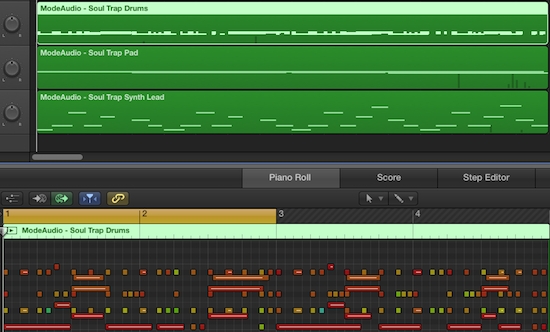
A quick route to getting your Trap beats off the ground is to raid the hoards of quality MIDI files in our royalty-free sound catalogue, which are ready to slot straight into your DAW session.
4. The Biggest Bass
Now, onto that bass at last! To love Trap music is nothing short of bass-addiction, such is the genre's focus on those low frequencies. How do we go about achieving this quality' We have 3 methods for you but let's start with the most fundamental - grab yourself a good TR-808-style kick drum sample!
1 - Samples) Trap is very unusual in that the kick drum also serves as the bassline (the alternative is to layer a short kick sample over the top of each bass note), so tuning each kick sample is vital to your track.
Similar to how we created the snare rolls above, load your nice, long kick sample into a sampler and automate the playback pitch - rather than smooth lines and curves however, you'll want to be more precise and change the pitch only at the very beginning of each kick drum hit.

2 - Patches) An easier method is to take advantage of the kick drum sampler instruments we've created for you in our Power Tools release (available in Logic, Ableton Live, Reason & FL Studio formats), allowing you to literally play your kick drum/bassline pattern in like you would a synth line. In my opinion, this is by far the easiest and most enjoyable way to programme in your Trap kick drum beats and basslines.
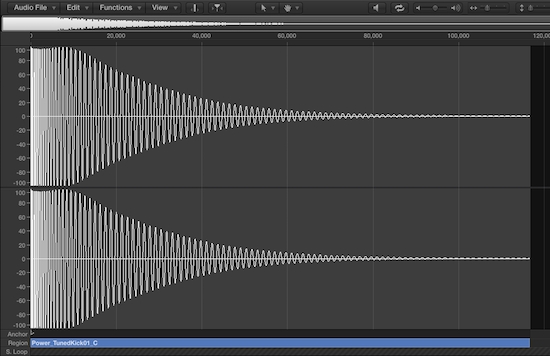
3 - Synths) A third method you can use to create big Trap kick and basslines is to use a synth, such as NI Massive or Serum.
Whilst these might not sound quite as thumping as the kick sample method (you can always layer a snappier kick on top of your bassline to rectify this however), you can certainly push the low end to super deep territory and you'll have more control over the timbre and tone of the sound - we've crafted a number of presets packs, such as Future Trap and Silhouette, for just this purpose.
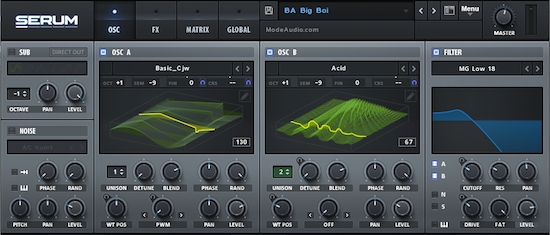
In terms of bassline melody, older Trap music tended to focus on the semi-tone to achieve that sinister quality, so you could always try starting there. You'll of course want to tailor your kick melody to the type of track you want to create, so play around with different pitches and progressions until you're happy.
5. Synth Zone: Plucks, Arps & Sirens
We've got our drums grooving along and the kick drum is bellowing out that deep bassline - so what's next' Well, synths, leads and melodies!
In the early days of Trap, sinister synth plucks laced with reverb were often favoured, creating plinky plonky sequences that wouldn't have sounded out of place in a Horror film soundtrack. Then a certain viral video came around (we're lookin' at you, Baauer) and ushered in the era of the 'siren' synth lead.
The creation of such an effect is all in the pitch envelope, so find yourself a synth that allows you to assign these (such as NI Massive), dial up a thick sawtooth wave and apply a fairly slow, smooth curve from -12 semi-tones up to the desired pitch. Getting the timing right is everything here, so listen carefully to your tune and play about with the length of the pitch envelope.
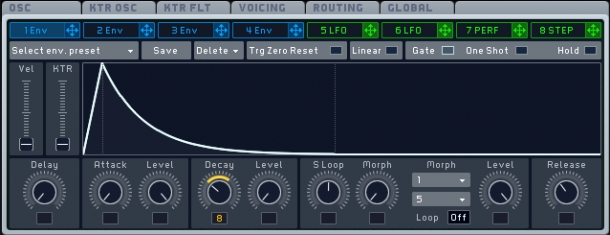
Arpeggiated and gated synth leads are also very common in Trap, so dial in your minor triads (that's a semi-tone shift of 3 and 7) and 1/16th note LFOs to create ballpark arps and gates. As with the siren lead, sharp, buzzy sawtooth waves and lots of reverb work wonders here, so don't hold back on the FX!
I hope you've enjoyed my deconstruction of Trap above and are starting to get a feel for how to approach your own Trap smash - many of our sound packs are geared specifically towards helping you to make great Trap music, so check them out and get producing now!














